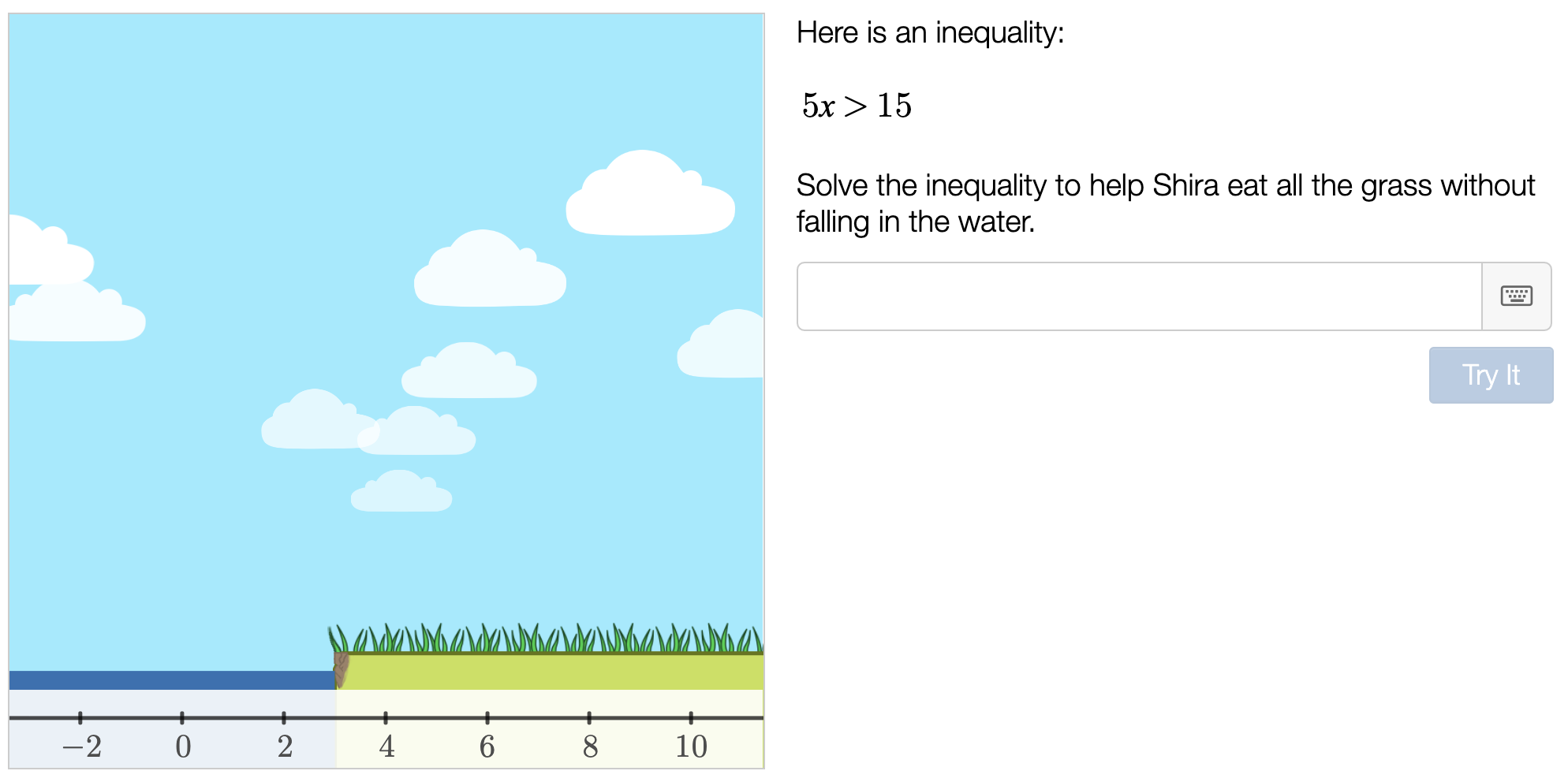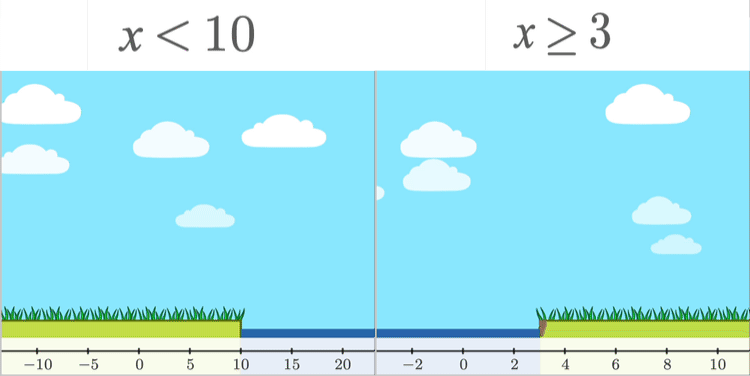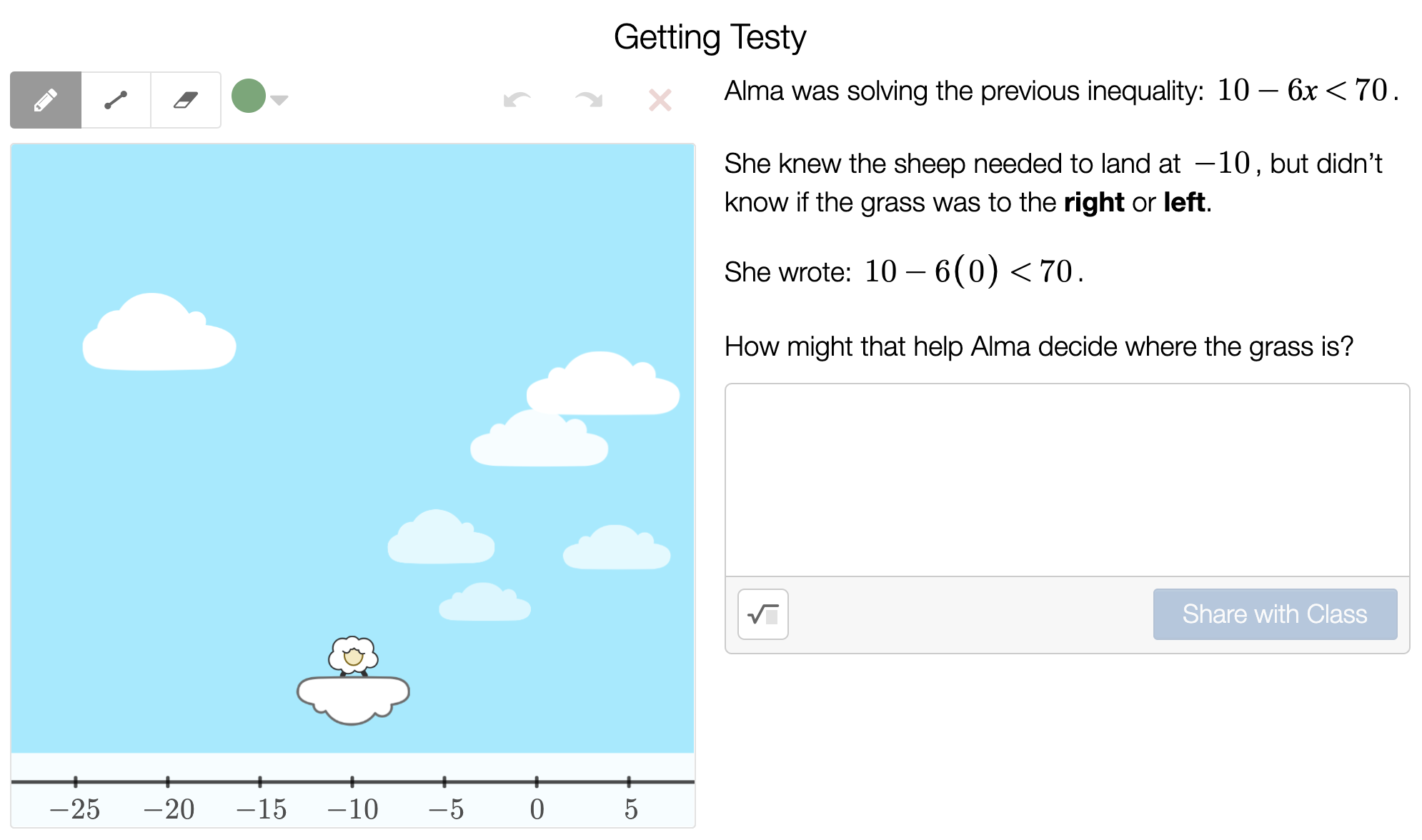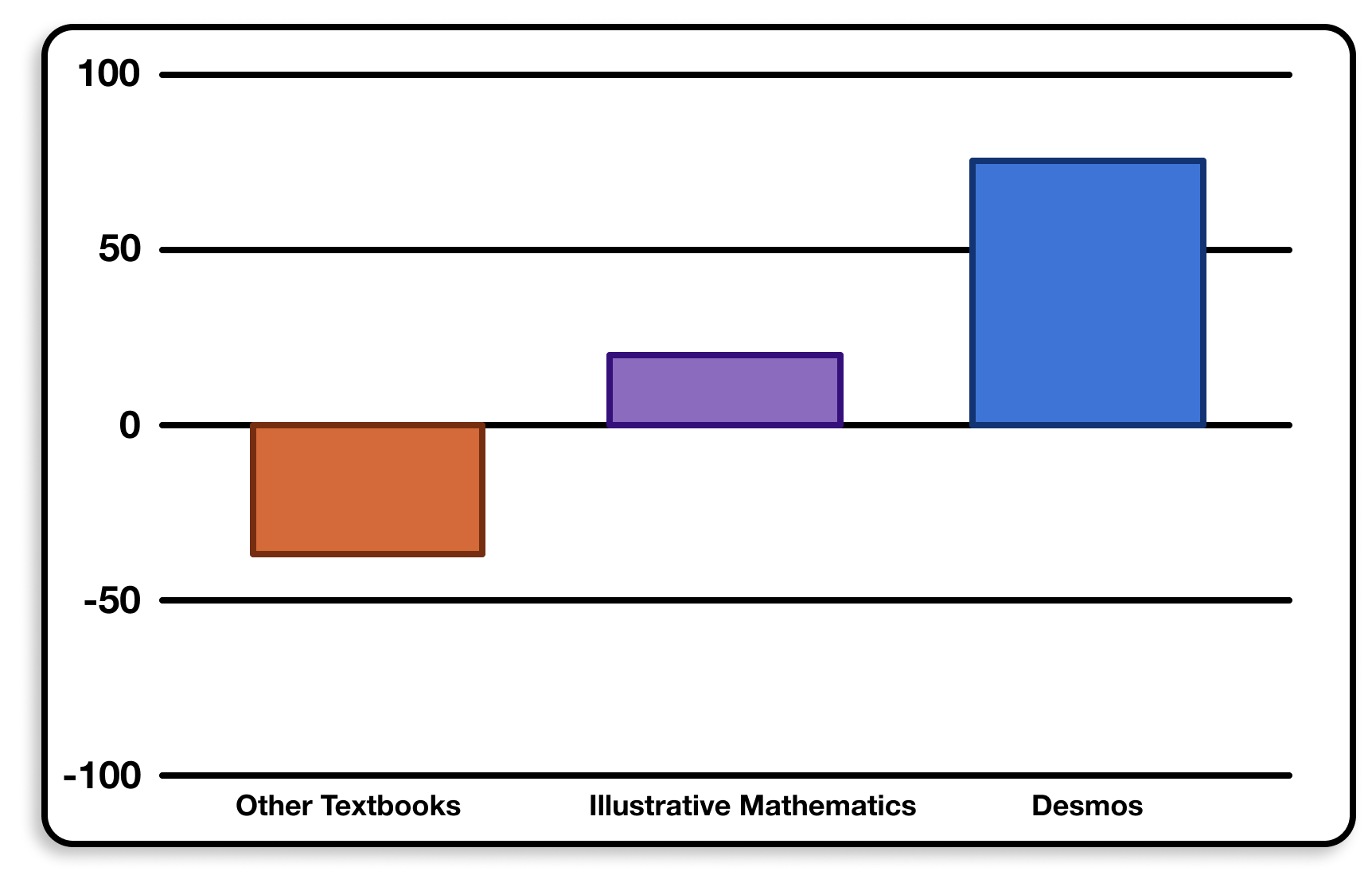Welcome to a series of posts sharing how we #Desmosify the curriculum from Open Up Resources/Illustrative Mathematics. You can use this lesson for free, or sign up to get many more activities just like it in our core middle school curriculum!
Here’s how we #Desmosified an Open Up Resources/IM lesson to help students learn to solve inequalities..
Desmosification #1: Create concrete connections.
In the original lesson we #Desmosified, Open Up Resources/Illustrative Mathematics invites students to complete a series of exercises like the one below.

These exercises are likely to give students valuable experience with the subtleties of inequalities. The examples include inequalities that are strict and inclusive, inequalities that include negative and positive values, etc.
We worried, however, that students would spend too much time filling in tables to notice those subtleties. We also wanted to connect the solution of inequalities to a representation that’s more concrete for students than tables.
Enter Shira the Sheep!

Shira the Sheep likes eating grass and dislikes getting wet. She also provides us with a concrete and memorable metaphor for the solutions of inequalities.
Desmosification #2: Give feedback that causes thinking.

Imagine all the different inequalities students might enter in response to this situation. Our goal is to faithfully interpret all of them in Shira’s world, giving students more effective feedback than either a) a right/wrong evaluation or b) no feedback at all, which is common for paper-based curriculum.
The most straightforward interpretation of a solution like x > 3 is that Shira should land at x = 3 and run to the right. Deciding how to interpret strict inequalities when we asked for an inclusive inequality and vice versa was challenging for our team – and fun. In those instances, we decided Shira would leave a blade of grass behind or the ground would crumble beneath her.

We feel pretty confident that your students will anchor their discussions about inequalities on Shira the Sheep for months to come.
Desmosification #3: Create cognitive conflict.

We wanted to make sure students reflected on some of the same subtleties of the original lesson. We find that’s easier when students have a concrete context anchoring their thinking. Once students are immersed in the context, we can more easily ask them to settle a dispute between two contrasting ideas, or to explain why a method works.
Behind the Scenes
Desmos lesson developer Zack Miller describes one of the core design dilemmas of the lesson and how our team found our way through it.
Settling on the concept of a grass-eating sheep was tough! In an earlier draft, we had a sheep eating stars, and it wasn’t feeling right because stars are discrete and inequalities are continuous. But grass can be continuous!
Getting the interpretive feedback to feel right was also tricky. As is typical of our approach, we wanted to show, not tell; and we also wanted to be generous in the kinds of inequalities we’d accept. So what should happen in sheep world if a solution set is an inclusive inequality but students answer with a strict inequality, or vice versa? What should happen if the answer is
x < 3and a student answersx ≤ 2.99(which has a very similar solution set)? What should happen if students enter an equation? Or an inequality that’s way off the screen?
I’m pleased with how we ended up handling every one of those cases.
What’s Next?

Overall, teachers in our 2019-20 pilot study really liked the Open Up Resources/Illustrative Mathematics curriculum … but they loved what we did to #Desmosify it. (Definition of the scale.)
- Invite your students to play with Shira the Sheep!
- Get activities like this every day in our core middle school math curriculum.
